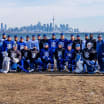Never played fantasy hockey before? It's time to get the lowdown on everything that goes into drafting and managing a team.
Below is NHL.com's fantasy hockey glossary of terms, strategies and formats.
Sign up for a Yahoo Fantasy league
now and start learning how to play fantasy hockey!
NHL.com fantasy hockey glossary
Terms, strategies, formats to know for beginners

© Gregory Shamus/Getty Images
Auction (type of draft) - An auction draft format allows fantasy owners to put players up for bidding. Each team gets a predetermined budget ($200 default) and can choose whether to bid on a nominated player based on their remaining budget. Players who go up for bidding early in auction drafts could become overpriced, so it helps immensely to do your homework and be patient so you have an idea of the overall landscape, players worth spending up for, and potential value picks later in drafts.
Add- Over the course of the season, you have the opportunity to add players off the waiver wire. Some leagues have weekly add/drop limits and others have a season-long limit. Know your league format and manage your roster appropriately. If you place an injured player on injured reserve or an IR+ spot, you can add a replacement player.
Average draft position (ADP) - This is a metric that tracks where players are being drafted on average in the overall landscape. Take ADPs with a grain of salt, because leagues come in all shapes and sizes, but they can provide a ballpark estimate as to where players might be drafted so you can determine whether specific players are worth reaching for or if they could slip a few rounds.
Bargain (player description) - A draft bargain is a player who is ranked high by a user or specific fantasy expert yet is going well later than that rank based on average draft position. The term for when fantasy owners capitalize on these undervalued players as they fall in drafts is "bargain hunting."
Bench (roster spot) - Bench spots are reserved for players you may not feel comfortable starting over others on your roster for any variety of reasons, ranging from a tough matchup to a recent slump. You can rotate players among your bench spots and starting lineup on a day-to-day or week-to-week basis depending on your league settings.
Best available (draft strategy) - Taking the best player available can be an effective draft strategy. Though it's important to focus on positional needs in certain rounds, drafting the best player available at any point (within reason) can give you added depth at a certain position and/or trade bait to use to your advantage after your draft.
Bounce-back (player description) - This is a player who underperformed the previous season but has a chance to return to an earlier form of career productivity. Bounce-back candidates can rebound after an injury-plagued season or simply after one with a low shooting percentage or when his team struggles. A change in scenery or coaching change can sometimes affect a player's bounce-back candidacy.
Breakout (player description) - A breakout candidate is a well-known young player who has a chance to exceed fantasy expectations and join the upper echelon at his position for the first time in his NHL career. These usually are players being drafted outside the top 50 overall.
Buy low (strategy) - Buying low on a player means adding him off the waiver wire or acquiring him via trade during a slump or time when his fantasy stock is much lower than usual.
Can't cut list (specific to Yahoo's game) - To maintain competitive balance, some leagues have a "can't cut list" to prevent users from dropping big-name players and/or early-round picks. This list is determined and managed by the provider (i.e. Yahoo) based on performance, injuries and user feedback. If a player on the "can't cut list" is injured and out for the rest of the season, you are able to drop them to clear a roster spot.
Commissioner - A fantasy commissioner is the user tasked with setting up and managing a league. Depending on the power of a league commissioner, he can sometimes approve or reject unfair trades. The commissioner is usually in charge of league rules (and any potential changes). Commissioners of keeper leagues and/or live offline drafts manually enter each team's keepers from the previous season or full rosters. Responsibilities of a league commissioner vary by league.
Dark horse - A dark horse player is either drafted late or goes undrafted in most leagues but has a chance to become fantasy relevant over the course of a season. Adding dark horse players to your watch list is an effective strategy so you can monitor them until you have reason or room to add them.
Drop- Over the course of the season, you have the opportunity to drop players based on poor performance, a lengthy injury timetable or personal preference. Some leagues have weekly add/drop limits and others have a season-long limit. Know your league format and manage your roster appropriately. If your injured reserve or IR+ spots are filled, you may need to drop an injured player in order to pick up a replacement. You also may need to drop a player if want to make a trade where you acquire more players than you give up.
Dual eligibility - A dual-eligible player is one that is eligible to be started at different positions on different nights. Dual-eligible players provide added roster flexibility so you can start as many players as possible on a given night. Some nights you might have a center spot open, and others you might have a left wing or right wing spot open.
Dynasty league - A dynasty league is a format where fantasy owners can retain most or all of their fantasy players from the previous season. A dynasty league is an expanded type of keeper league. In a one-year league, you start fresh the following season. In a dynasty league, your roster decisions could either continue to pay off or hurt you in the long run.
Fantasy owner - This is the term for the person managing a fantasy roster.
Flier - Taking a flier on a player means they are either available late in a draft or on the waiver wire. It is usually a player that comes with risk but also carries a potential high reward because of potential usage in lineup.
Handcuff (strategy) - This is a term used for a player, usually a backup goalie, who is worth owning as an insurance policy. A good example is that fantasy owners who draft Nashville Predators goalie Pekka Rinne in an early round should handcuff his backup, Juuse Saros, in later rounds in case Rinne is injured or the goalie competition develops into more of a time-share situation than expected.
Head-to-head league - This is a league format where fantasy owners match up against each other on a weekly basis. Statistics are totaled in each category over the course of a week, and winning each category counts as a win, loss or tie. If you win seven categories, lose two and tie one in a 10-category head-to-head weekly matchup, you would go 7-2-1 that week. The category wins, losses and ties are totaled weekly and then added to a final season record. The champion of a head-to-head league is determined by the results of a playoff bracket with seeds. The playoffs usually take place over the final month of the NHL regular season, with some leagues ending the second-to-last week and others ending the final week.
Hits (league format) - A recent trend in fantasy hockey is that leagues are moving away from penalty minutes as a scoring category, using hits instead.
Injury replacement (strategy) - When a player is injured, you should always look at players who can move up on the depth chart to take on similar usage and fantasy production. These players are usually added in droves by fantasy owners following news of a long-term injury. Injury replacements can either be from the same team of the injured player or the best player available at that time on the waiver wire.
Injured reserve (IR) spot - When a player is placed on injured reserve, Yahoo makes that player eligible for IR in fantasy leagues. That player can be added to an IR spot, opening up an additional roster spot for the owner to add a player off the waiver wire. Some leagues have multiple IR spots so owners who see many of their players injured in one stretch are not forced to drop them.
IR+ spot (specific to Yahoo's game) - This is a flexible injured reserve spot that includes players who are listed on IR or as day-to-day (DTD). Usually, players listed as DTD are not eligible for IR because it's a short-term injury. This relatively new league concept allows you to stash a player on IR+ and quickly add another - even on the day of a game.
Keeper league - Keeper leagues allow you to retain multiple players from your team from last season. Some leagues allow more keepers than others, and some have more restrictions than others. Keepers usually sub out early-round picks in a draft the following season or sub out the round of the pick the player was taken with in a previous draft. Some leagues allow you to keep players forever or for a certain number of seasons after you draft them. Younger players are always prioritized in a keeper league draft.
Line stacking (strategy) - Line stacking involves drafting players expected to play together on the same line, either at even strength or on the power play. This is a risky strategy because you can reap the benefits when your players perform well together, but also take a collective hit if/when that line slumps.
Linear (type of draft) - This is when teams make picks in the same order throughout a fantasy draft. That means if you draft first in a 10-team linear draft, you draft first out of 10, 11th out of 20, 21st out of 30, and so on.
Mock draft - Mock drafts are simulations available for practice and reflection. You can join a live mock draft with users from around the world at any time on Yahoo's platform, and simulate a draft in either eight-team, 10-team, 12-team or 14-team formats. You should export pre-draft rankings so you can sort by customized rankings in a mock draft.
Order (draft order) - This is the order of your league's fantasy draft, which can either be randomized on Yahoo's platform or entered manually by the league commissioner (if you put your names in a hat or base the order off league finish from a previous season).
Overvalued - Overvalued is another word for overrated. Players who are overvalued either performed at an unsustainable rate the previous season or bring any number of concerns that could quickly alter their high fantasy stock. Sometimes it's something as simple as name value (popularity) that makes a player overestimated in fantasy leagues.
Pickup - This is another word for a player who has been added off the waiver wire.
Point pair - This is a term for linemates or a forward-defenseman combination that works hand-in-hand. The most productive point pairs are determined by team goals
where each player records a point
.
Points league - Points are awarded based on how your players perform in each statistical category. Each stat category has a point value based on your league settings, and each player's points are then summed to produce your total for that day. The fantasy team with the most points at the end of the year wins the league. For example, a goal may be worth three points and an assist worth two points. You can have a points league with weekly matchups, or you can have a full-season tally with standings updating each day.
Position eligibility changes (specific to Yahoo's game) - Yahoo lists and updates position eligibility for each player in its fantasy game depending on position(s) they play most frequently. You can find changes on Yahoo's top-page navigation bar by hovering over "players", clicking "NHL Roster Changes" and clicking "Position Eligibility." Positions are added at Yahoo's discretion over the course of the season, with affected players gaining dual or even tri eligibility.
Position scarcity (strategy) - This is a draft strategy where you know the overall landscape at each position, identify tiers and rank players accordingly, and consider how important a player is compared to the rest of his position.
Pre-draft rankings (specific to Yahoo's game) - You can pre-rank your own players based on personal preference or a particular expert's rankings. You can enter your rankings manually by clicking "draft" on the top-page navigation bar on Yahoo's platform. Export your pre-draft rankings if you are in multiple leagues and create different versions for different league types. For standard leagues, we recommend you pre-rank your players using NHL.com's rankings.
Rotisserie league (also known as "Roto") - In a Roto league, teams are ranked based on their roster's performance in each category that said league counts. Points are awarded in the order of finish for each category at the end of the regular season, and the team with the most points wins the league. There are no weekly matchups or playoff bracket to decide the league champion. You are matched up against the rest of the league for the entire season. Ex: If you finish with the most goals during the season, you will be awarded the highest point total for that category. The total decreases depending on where you place in that category among each team in the league.
Sell high (strategy) - This is the opposite of buying low, but can also be an effective strategy. If a player starts the season hot and becomes a fantasy commodity (owned in high percentage of leagues), that player can have equal value at the surface to a slumping player. There is a science to this, and it could be risky, but injury history and career production (especially shooting percentage) are important factors to consider before selling high on an overperforming player. You can sell high and buy low in the same trade to acquire a more proven or sustainable player.
Sleeper (player description) - A sleeper candidate is a late-round pick in position to exceed fantasy expectations and a low average draft position. They can either be young players or more experienced ones who remain undervalued for one reason or another, going outside the top 100 on average in drafts. ... There are also deep sleepers, young players (non-rookies) who are overlooked in standard drafts. Deep sleepers usually go in late rounds of deeper drafts and should be added to your watch list in a standard league.
Snake (type of draft) - This is the opposite of a linear draft. In a snake draft, you have an assigned draft order but the user who drafts first in one round drafts last in the next round, and so on. The order is reversed in each passing round. For example, the user who drafts 12th in a 12-team league would draft 12th and 13th in a snake draft and then not again until 36th and 37th. That user would have consecutive picks with large gaps in between for the entire draft.
Standard (type of league scoring) - Standard leagues have 10 or 12 teams with 16 roster spots (two centers, two left wings, two right wings, four defensemen, two goalies, four bench spots). Standard categories include goals, assists, plus/minus, penalty minutes, power-play points and shots on goal for skaters, and wins, goals-against average, save percentage and shutouts for goaltenders.
Stash (strategy) - Fantasy owners can stash players on injured reserve (IR) or IR+ instead of dropping them. This protects players from being added by another team. If you have a free IR spot, you can move one of your injured players there or even add a player off the waiver wire in order to stash him. This gives you the opportunity to make room for injured players on your roster so you can activate them when they return.
Stat correction (specific to Yahoo's game)- If there is a change in scoring on a play involving one of your players, it may be applied at the end of your weekly matchup in a head-to-head league. From Yahoo: "Corrections displayed in this way were received too late to apply to the scoring for your league."
Steal (player description) - This is a loose term referring to a player drafted late who vastly exceeds fantasy expectations. A rookie, breakout, sleeper or dark horse player could qualify as a steal by the end of the season based on performance relative to average draft position.
Streaming (strategy) - This strategy involves adding and dropping players on a weekly basis to your advantage based on favorable matchups and/or upcoming schedule. If you need help in a particular league category and have either flexibility or no limit on roster moves, you can pick up category specialists or starting goalies over the course of the season. This can be an effective strategy, but also a demanding one.
Tandem (goalie tandem) - This is the term for two goalies on the same team. It's a popular strategy to draft each of a team's goalies to get credit for as many starts as possible. This can be an especially effective strategy if your league has a weekly goalie appearances limit. Just remember, it's imperative to balance start volume (wins, shutouts) and efficiency (goals-against average, save percentage) based on matchups in leagues with standard categories.
Trades- You can make fantasy trade offers to satisfy positional needs or merely shake up an underperforming roster. There is usually a deadline near the three-quarter mark of the regular season (varies by league) after which you can no longer make trades with other members of your league. Depending on your league settings, your trades, even if approved by each party involved, may be subject to commissioner approval and/or league approval by vote.
Transaction trends - This is a page on Yahoo's fantasy hockey platform where you can see which players are being frequently added, dropped or traded. Such roster trends can be related to performance, lineup placement and/or injury.
Undervalued- Undervalued is another word for underrated. This can be a player in any round of a draft that is overlooked or underestimated based on the potential for greater success or a return to past levels of fantasy productivity. Bargains, breakouts, bounce-backs, sleepers and dark horses fall into the undervalued category.
Utility (roster spot) - This roster spot, referred to as "UTIL" in your starting lineup, is different from a bench spot. Statistics for players in UTIL spots count in your team's daily performance. This is a flexible roster spot; you are able to move an additional forward or defenseman into a UTIL spot. Goalies cannot occupy a UTIL spot.
Watch list - Sometimes you will want to keep tabs on a sneaky, up-and-coming fantasy prospect even though you may not have room to add him to your roster. You can flag available players and monitor them by clicking the star next to a player's name on Yahoo's platform. This compiles a watch list of players you have selected.
Waiver wire - If a player is available to be added, he will be on the waiver wire. Think of this as free agency. You can browse the waiver wire to find potential replacements at any position from the second your draft ends until the final day of the regular season. If you drop a player, and he clears waivers (if applicable), said player ends up on the waiver wire. Make sure you are aware of whether there is an add/drop limit or a bidding system in your league.
Waiver wire priority - In certain leagues, players who are dropped are placed on waivers. Waiver periods and settings differ by league, but waiver priority is a concept that weighs league standings and/or recent transactions so that everyone in the league has a fair chance to claim available players.

















